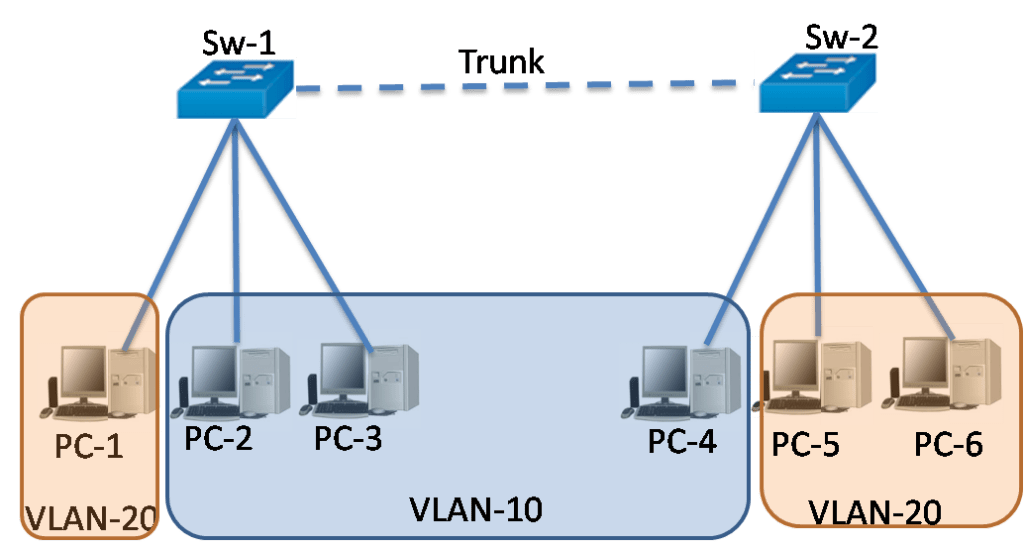Each port on a switch can be configured either as an access or a trunk port. An access port is a port that can be assigned to a single VLAN. This type of interface is configured on switch ports that are connected to devices using a normal network interface card, for example, a host/end device in a network. A trunk interface is an interface that is used to connect to another switch. This type of interface can carry traffic of multiple VLANs.
Access port: A switch port that can be assigned to a single VLAN. This type of interface is configured on switch ports that are connected to end devices such as workstations, servers, printers, or access points.
Trunk port: Trunk port is that port, which is used to connect to another switch or router. This type of switch interface can carry traffic of multiple VLANs, thus enabling to extend VLANs across the entire network. A VLAN ID is assigned to each Ethernet frame for tagging when they traverse between switches. To identify the traffic belonging to a specific VLAN, the VLAN identification method (IEEE 802.1Q or ISL) is used. IEEE 802.1Q, known as Dot1q, is a networking standard that supports VLANs on an IEEE 802.3 Ethernet network, compared to Inter-Switch Link (ISL), which is a Cisco Systems proprietary frame tagging protocol.
Note: Trunk links can carry the traffic of multiple VLANs across them but by default, if the links between switches are not configured as a trunk, then switch exchanges only the default VLAN1 information.















































